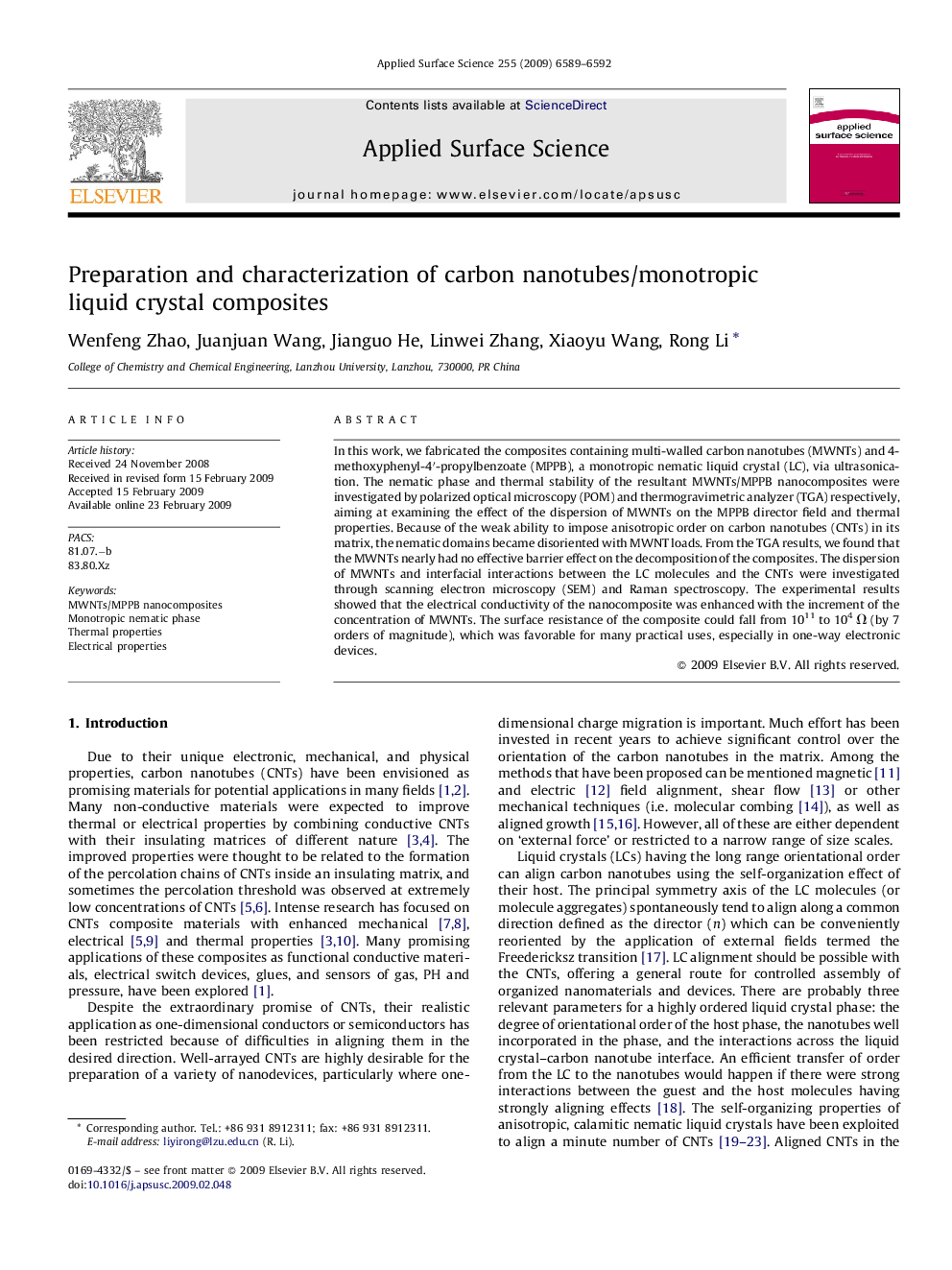| Article ID | Journal | Published Year | Pages | File Type |
|---|---|---|---|---|
| 5359791 | Applied Surface Science | 2009 | 4 Pages |
Abstract
In this work, we fabricated the composites containing multi-walled carbon nanotubes (MWNTs) and 4-methoxyphenyl-4â²-propylbenzoate (MPPB), a monotropic nematic liquid crystal (LC), via ultrasonication. The nematic phase and thermal stability of the resultant MWNTs/MPPB nanocomposites were investigated by polarized optical microscopy (POM) and thermogravimetric analyzer (TGA) respectively, aiming at examining the effect of the dispersion of MWNTs on the MPPB director field and thermal properties. Because of the weak ability to impose anisotropic order on carbon nanotubes (CNTs) in its matrix, the nematic domains became disoriented with MWNT loads. From the TGA results, we found that the MWNTs nearly had no effective barrier effect on the decomposition of the composites. The dispersion of MWNTs and interfacial interactions between the LC molecules and the CNTs were investigated through scanning electron microscopy (SEM) and Raman spectroscopy. The experimental results showed that the electrical conductivity of the nanocomposite was enhanced with the increment of the concentration of MWNTs. The surface resistance of the composite could fall from 1011 to 104 Ω (by 7 orders of magnitude), which was favorable for many practical uses, especially in one-way electronic devices.
Related Topics
Physical Sciences and Engineering
Chemistry
Physical and Theoretical Chemistry
Authors
Wenfeng Zhao, Juanjuan Wang, Jianguo He, Linwei Zhang, Xiaoyu Wang, Rong Li,
